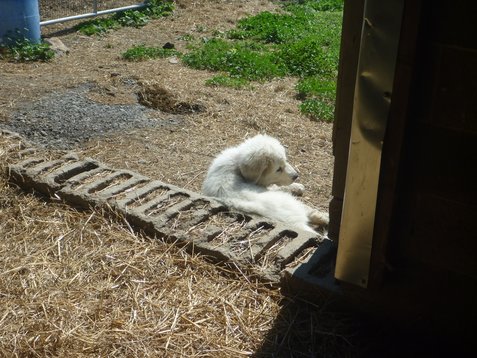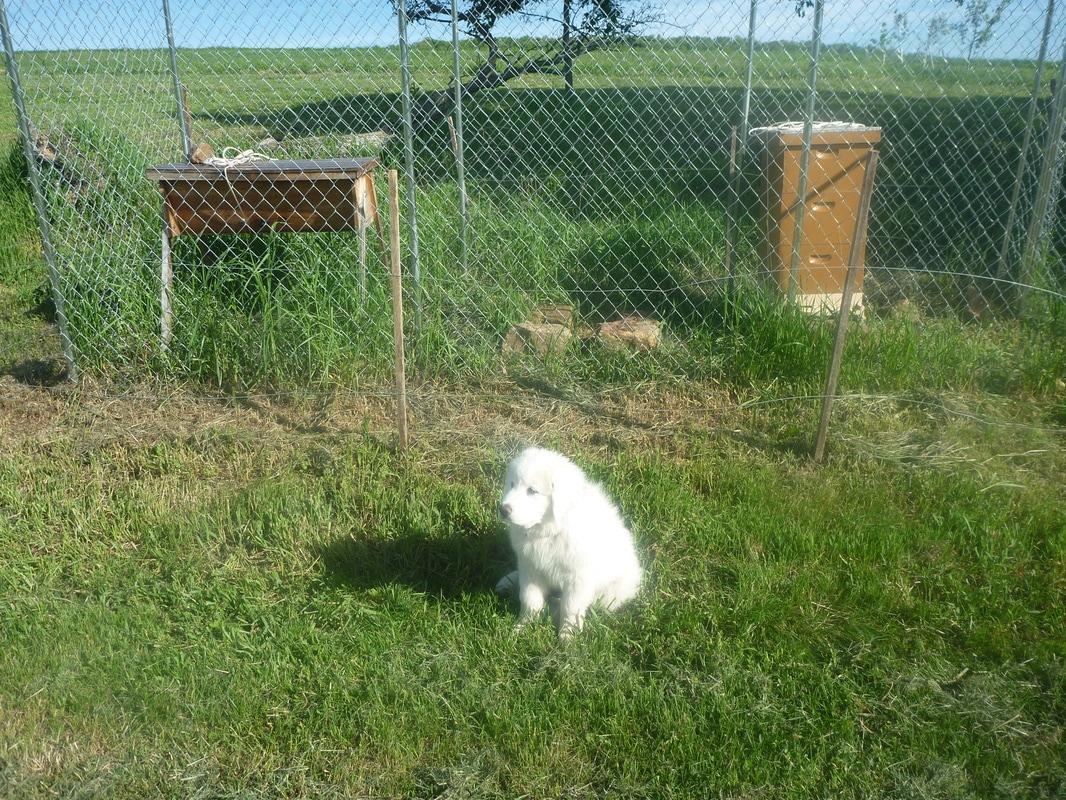It was an exciting week as we welcomed the first lamb born here at Shade Stone Farm.
|
A big piece of Shade Stone Farm's mission involves sustainability. Like many farms we use a number of operational and management practices to enhance our agricultural sustainability (covered manure storage, riparian buffers, pasture rotation, etc...). We will highlight some of those in a future post, but some of our "sustainability" is built right into our property. First, all of our water is supplied from a spring (that also feeds the pond visible in the banner photo on this page). Our on-site septic system processes and recycles our waste water. All of our winter heat and domestic hot water needs are met with an efficient wood gasification boiler. This device, in combination with some passive solar sun collection windows, allows us to heat this old farm house with less than 8 cords of wood. That makes optimal use of a plentiful, renewable resource we have right on our property. Finally, our grid-tied solar system is sized to produce all of our electrical needs over the course of a year. This photo of the back of the house shows that this 180+ year old structure has a few modern tricks. In addition to the solar array, you can see the large south facing windows on the addition. These allow winter sun to warm the large thermal mass of the original stone wall located inside the addition. You can also see fuel wood stacked under the deck stairs and our on-site septic system in the foreground.
We have repaired the damage a bear caused to our Langstroth beehive and we added some extra protection to discourage our friend (who we've named Baloo) from returning. When we were making the repairs to the Langstroth hive we noticed that our swarm had returned to the Top Bar hive. We had found the swarm on a bush in one of our fields as we walked out to un-tap our maple trees. We captured the swarm and placed them in the Top Bar hive, but that night Baloo made his messy visit. We thought they were gone for good, but lucky for us, they have returned!! This photo shows the repaired bottom board on the Langstroth hive, as well as our Integrated Pest Management system: 1. Chain Link enclosure, 2. Two strands of electrified wire, 3. Rosebud, the Great Pyrenees livestock guardian. Ok, so Rosebud is just a puppy and not ready to take on Baloo, but she is 30 lbs of cuteness added to this photo!
A couple of days ago we captured a swarm of honey bees and installed them in our top bar bee hive because the bees that occupied that hive this winter had disappeared. We were very hopeful that our new bees would make our empty hive their home. Unfortunately, that evening a bear decided that honey should be on the menu. The bear did not disturb the top bar hive, but knocked over our Langstroth hive and tore off the bottom board damaging a number of the frames in the lower brood chamber. In the ensuing chaos the newly installed swarm vacated the top bar hive. We don't know if the queen of the Langstroth hive survived the attack. We made some expedient repairs to the hive in preparation for some below freezing overnight temps and we ran some electric fence wire around the hive enclosure to deter Baloo the Bear from making our hives a nightly snack. There are many advantages to living adjacent to thousands of acres of State Forest and there are a few disadvantages. While we enjoy sharing the space with a wide range of Mother Nature's incredible creatures, we'd rather observe them at a bit more of a distance. Here is our hive enclosure before the attack. It is a 6' chainlink fence dog kennel, but the gate was unsecured and Baloo used the gate to gain entry. The Langstroth hive is on the right in this photo and you can see the white rope that is tied around both hives. This was effective in keeping the hive together and preventing a total loss. Baloo did not untie or tear the cord, but instead overturned the hive and tore open the screened bottom board. From there he had access to the lower brood chamber. This entire enclosure is now surrounded by two electrified wires.
|






 RSS Feed
RSS Feed

